
Sheet metal fabrication is a crucial process in various industries, including automotive, aerospace, construction, and electronics. The ability to accurately estimate the cost and time required for sheet metal fabrication projects is essential for maintaining profitability and meeting project deadlines. In 2024, with advancements in technology and evolving industry standards, mastering the art of calculating sheet metal fabrication cost and time has become more critical than ever.On average, Sheet Metal fabrication costs between $25 and $100 per hour in Europe. However, you can get a lower price from the China sheet metal or laser cutting shop like BE-CU Prototype, which offers $10 – $30 per hour from precision sheet metal fabrication to large sheet metal prototype manufacturing.
Accurate cost estimation is critical to sheet metal fabrication, ensuring that sheet metal fabrication projects are planned effectively, budgets are controlled, and profitability is optimized. In the dynamic manufacturing world, utilizing a sheet metal fabrication cost calculator can simplify the budgeting process and provide valuable insights for cost optimization.This comprehensive guide will explore the methods, factors, and tools involved in accurately determining sheet metal fabrication costs and time requirements in 2024.
My previous articles are focused on:
Get Instant Quote from BE-CU.com – Your trusted business partner in China for custommachining parts, fast delivery, high precision, and low set up cost.
Understanding Sheet Metal Fabrication Processes And Cost Type
Sheet metal doesn’t have the same flexibility in manufacturing as plastic, however, and needs to be used in a certain way for a product to be easy to manufacture.Sheet metal fabrication processes encompass a range of techniques used to transform flat sheets of metal into finished products or components. Understanding these processes is crucial for engineers, designers, and manufacturers to effectively produce high-quality sheet metal parts. Let’s explore some of the most common sheet metal fabrication processes:
Cutting Cost
- Shearing: Shearing involves cutting sheet metal using a shear or guillotine. Costs for shearing typically depend on the thickness of the material, the length of the cut, and the hourly rate of the shearing machine operator.
- Laser Cutting: Laser cutting offers precise and intricate cuts in various materials. Costs are influenced by factors such as laser power consumption, machine setup time, material thickness, and cutting speed.
- Plasma Cutting: Plasma cutting uses a high-velocity jet of ionized gas to cut through metal. Costs are influenced by factors such as plasma gas consumption, machine maintenance, material thickness, and cutting speed.
Bending Cost
- Press Brake Bending: Press brake bending involves forming sheet metal using a press brake machine. Costs depend on factors such as the complexity of the bends, machine setup time, hourly labor rates for the machine operator, and material handling requirements.
- Roll Bending: Roll bending, or roll forming, shapes sheet metal into cylindrical or curved profiles using a series of rollers. Costs are influenced by factors such as the number of passes required, machine setup time, material waste, and hourly labor rates.
- Incremental Bending: Incremental bending, also known as step bending, creates precise bends in sheet metal using incremental steps. Costs are determined by factors such as the number of bends, bend angles, machine setup time, and labor rates.
Joining Cost
- Welding: Welding joins sheet metal components using heat and pressure. Costs depend on factors such as welding method (MIG, TIG, spot welding), material thickness, welding rod consumption, machine setup time, and labor rates for welders.
- Riveting: Riveting fastens sheet metal components using mechanical fasteners called rivets. Costs are influenced by factors such as rivet type and size, machine setup time, labor rates, and rivet consumption.
- Adhesive Bonding: Adhesive bonding joins sheet metal using industrial adhesives. Costs depend on factors such as adhesive type, surface preparation requirements, curing time, material handling, and labor rates.
Forming Cost
- Stamping: Stamping creates shapes and features in sheet metal using a stamping press and die set. Costs are influenced by factors such as die fabrication costs, material waste, hourly machine rates, and labor rates.
- Punching: Punching creates holes or cutouts in sheet metal using a punch and die set. Costs depend on factors such as punch and die wear, material thickness, hole size, hourly machine rates, and labor rates.
- Embossing and Deburring: Embossing adds raised or recessed features to sheet metal, while deburring removes sharp edges. Costs are influenced by factors such as tooling costs, machine setup time, material handling, and labor rates.
Finishing Cost
- Surface Treatment: Surface treatments such as painting, powder coating, or plating enhance sheet metal appearance and durability. Costs depend on factors such as material preparation, coating type, material consumption, curing time, and labor rates.
- Grinding and Polishing: Grinding and polishing achieve smooth surface finishes on sheet metal components. Costs are influenced by factors such as machine setup time, abrasive material consumption, labor rates, and finishing requirements.
- Assembly: Assembly involves integrating multiple sheet metal components. Costs depend on factors such as assembly complexity, fastener usage, assembly time, material handling, and labor rates.
Factors that Affect Sheet Metal Fabrication Costs
Various factors influence sheet metal fabrication costs, each crucial in determining the final expenses for sheet metal parts. Manufacturers can gain insights into budget allocation and cost control by comprehending these cost components. Let’s explore the key factors that contribute to sheet metal fabrication costs:
Material Selection
Material grade and thickness also affect costs. Higher-grade materials and thicker gauges generally result in higher material costs.
Specialty materials or alloys may incur additional expenses due to their higher cost and specific fabrication requirements.
Labor Costs
Labor costs vary based on factors such as location, expertise, and prevailing wage rates in the industry.
Complex or intricate designs may require more labor-intensive processes, leading to higher labor costs.
Equipment and Tooling
Maintenance and operating costs associated with fabrication equipment also contribute to overall project expenses.
Complexity of Design
Design features such as multiple bends, cutouts, and embossed or stamped details increase fabrication complexity and may require specialized equipment or techniques.
Quantity
Setup costs for tooling and equipment may be amortized over a larger production run, reducing the cost per unit for higher quantities.
Lead Time
Longer lead times allow for better scheduling and resource allocation, potentially reducing fabrication costs.
Quantity
Setup costs for tooling and equipment may be amortized over a larger production run, reducing the cost per unit for higher quantities.
Lead Time
Longer lead times allow for better scheduling and resource allocation, potentially reducing fabrication costs.
The Benefits of a Sheet Metal Fabrication Cost Calculator
Utilizing a sheet metal fabrication calculator offers numerous advantages, empowering manufacturers to make informed decisions and optimize their budgeting process. Let’s explore the benefits of using a cost calculator:
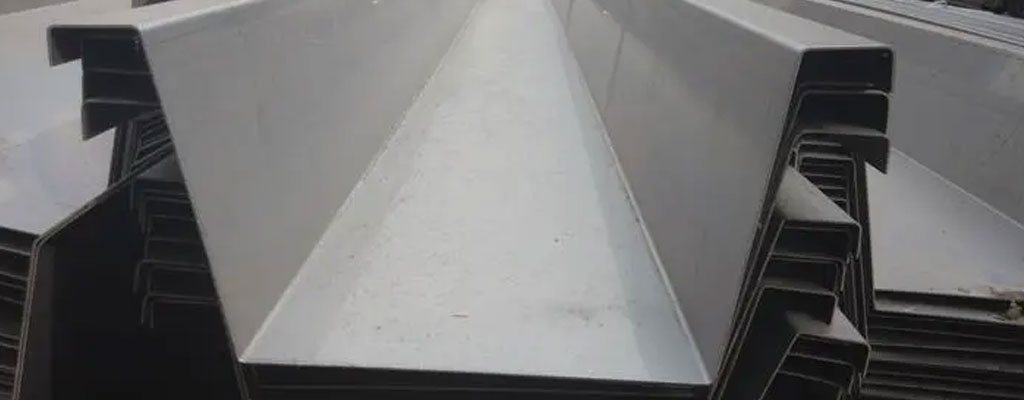
- Accurate Cost Estimation:A cost calculator provides accurate estimates of fabrication costs based on input parameters such as material type, thickness, quantity, labor rates, and overhead expenses.By accounting for various cost factors and variables, the calculator helps avoid underestimating or overestimating project costs, leading to more precise budgeting and financial planning.
- Time Savings:Manual cost estimation processes can be time-consuming and prone to errors. A cost calculator automates the calculation process, saving time and effort for estimators and project managers.With predefined formulas and algorithms, the calculator generates cost estimates quickly, allowing users to focus on other aspects of project planning and execution.
- Optimized Material Selection:By comparing the cost implications of different material options, a cost calculator helps optimize material selection decisions.Users can evaluate the cost impact of choosing alternative materials, grades, or thicknesses, enabling them to balance performance requirements with budget constraints.
- Transparent Pricing:A cost calculator provides transparency in pricing by breaking down costs into individual components such as material, labor, equipment, and overhead.Users can easily understand the cost drivers and make informed decisions regarding cost-saving measures or trade-offs.
- Cost Comparison:A cost calculator allows users to compare the costs of in-house fabrication versus outsourcing to external vendors.By evaluating the cost implications of different production scenarios, users can identify the most cost-effective approach for their specific needs.
- Scenario Analysis:Users can conduct scenario analysis by adjusting input parameters such as quantity, lead time, or labor rates to assess the impact on overall fabrication costs.This flexibility enables users to explore various what-if scenarios and evaluate different production strategies or cost-saving initiatives.
- Improved Decision-Making:Armed with accurate cost estimates and cost breakdowns, decision-makers can make informed choices regarding project feasibility, pricing strategies, and resource allocation.Cost calculators provide valuable insights that support data-driven decision-making, leading to better outcomes and improved profitability.
- Enhanced Customer Communication:Cost calculators facilitate transparent communication with customers by providing detailed cost breakdowns and estimates.Customers can better understand the factors influencing project costs and make informed decisions regarding project scope, specifications, and budget.
Sheet Metal Design Services Cost
The cost of sheet metal design services can vary significantly depending on various factors such as the complexity of the design, the experience of the design engineer, the project timeline, and the geographic location.
Additionally, when considering freelance design engineers, rates can vary based on their expertise, reputation, and demand for their services. Here’s a breakdown of the typical pricing structures for sheet metal design services and freelance design engineers:
Sheet Metal Design Services:
- Hourly Rate: Many design firms or engineering consulting companies charge an hourly rate for sheet metal design services. Hourly rates can range from $50 to $150 or more per hour, depending on factors such as the firm’s reputation, location, and the level of expertise required for the project.
- Fixed Price: Some design firms may offer fixed-price quotes for specific sheet metal design projects. The cost is determined based on the estimated scope of work, complexity of the design, and project requirements. Fixed prices for sheet metal design services can range from a few hundred to several thousand dollars, depending on the project’s complexity.
- Retainer or Project-Based Fees: For long-term projects or ongoing design support, design firms may offer retainer agreements or project-based fees. These arrangements typically involve a set monthly fee or a lump sum payment for a defined scope of work over a specified period.
Freelance Design Engineers
- Hourly Rate: Freelance design engineers typically charge hourly rates for their services, which can vary widely depending on their experience, specialization, and geographic location. Hourly rates for freelance sheet metal design engineers can range from $30 to $150 or more per hour.
- Fixed Price: Some freelance design engineers may offer fixed-price quotes for specific sheet metal design projects. The cost is based on the estimated time and effort required to complete the project, as well as any additional expenses such as software licenses or materials. Fixed prices for freelance sheet metal design services can range from a few hundred to several thousand dollars, depending on the project’s complexity and scope.
- Project-Based Fees: Freelance design engineers may also offer project-based fees for larger or more complex sheet metal design projects. The fee is negotiated based on the project requirements, deliverables, and timeline.
Glocal Sheet Metal Fabrication Cost Comparison: China vs Japan vs USA vs German.
In the world of manufacturing, sheet metal fabrication stands as a cornerstone for various industries, from automotive to aerospace, electronics to construction. The choice of where to source sheet metal fabrication services involves intricate considerations, not least among them being cost-effectiveness. In this comparative analysis, we delve into the intricacies of sheet metal fabrication costs across four major players in the global market: China, Japan, the USA, and Germany.
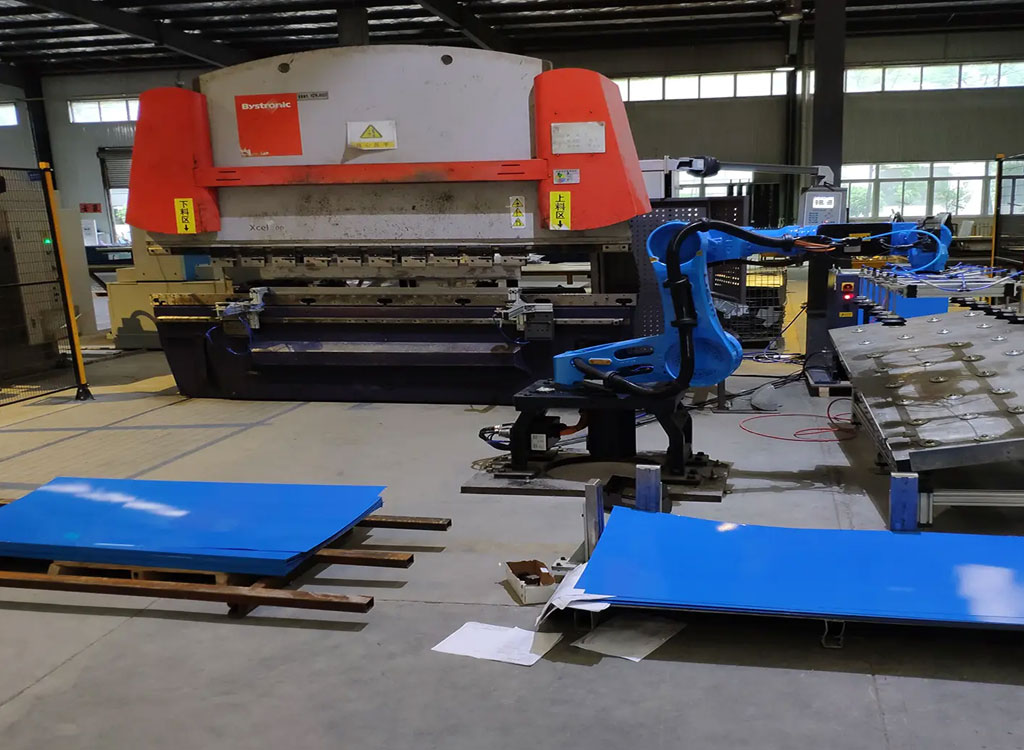
Before delving into the specifics of cost comparison, it’s essential to grasp the broader landscape of sheet metal fabrication in each country.
China, often hailed as the world’s factory, boasts a massive manufacturing infrastructure fueled by abundant labor and low production costs. Its prowess in mass production has made it a go-to destination for many industries seeking cost-efficient manufacturing solutions.
Japan, renowned for its precision engineering and technological innovation, occupies a unique position in the global manufacturing scene. While labor costs tend to be higher than in China, Japan’s focus on quality, efficiency, and advanced technology often justifies the investment.
The United States, with its diverse industrial base and emphasis on innovation, offers a blend of technological sophistication and manufacturing prowess. While labor costs are higher compared to China, factors such as proximity to market and intellectual property protection often tip the scales in its favor.
Germany, synonymous with engineering excellence and high-quality manufacturing, is revered for its precision engineering and adherence to stringent quality standards. Despite higher labor costs, German-made products are often perceived as benchmarks of quality and reliability.
Now, let’s delve into the nitty-gritty of cost comparison across these four manufacturing giants.
Labor Costs and Efficiency
Labor cost stands as a significant factor influencing sheet metal fabrication expenses. In China, labor costs are considerably lower compared to Japan, the USA, and Germany. However, concerns regarding labor rights, turnover rates, and skill levels may impact overall efficiency and quality control, potentially offsetting the initial cost advantage.
Japan, while facing higher labor costs, compensates with unmatched efficiency, advanced automation, and a focus on continuous improvement (kaizen). Skilled craftsmanship and attention to detail contribute to Japan’s reputation for producing high-quality sheet metal components, albeit at a higher price point.

In the USA, labor costs fall somewhere between China and Japan, reflecting a balance between cost-effectiveness and quality. The adoption of advanced manufacturing technologies, such as CNC machining and robotics, enhances efficiency and productivity, mitigating the impact of higher labor costs.
Germany’s labor costs rank among the highest globally, but they are commensurate with the country’s reputation for precision engineering and superior quality. The German manufacturing sector’s emphasis on skills training, innovation, and automation ensures optimal efficiency and product excellence, albeit at a premium price.

Material Costs and Supply Chain Dynamics
The cost of raw materials plays a pivotal role in sheet metal fabrication expenses. China’s dominance in manufacturing often translates to competitive material prices, thanks to extensive supply chains and economies of scale. However, fluctuations in global commodity markets and quality control issues may pose challenges for businesses sourcing materials from China.
Japan’s commitment to quality extends to its choice of materials, with an emphasis on high-grade alloys and advanced composites. While material costs may be higher compared to China, Japanese suppliers are renowned for reliability, consistency, and adherence to specifications.
In the USA, access to a diverse range of raw materials coupled with efficient supply chain management helps mitigate the impact of labor costs on overall fabrication expenses. Domestic sourcing initiatives and strategic partnerships further bolster the resilience of the American manufacturing sector.
Germany’s reputation for engineering excellence extends to its material sourcing practices, with a focus on premium-grade metals and alloys. While material costs may be higher compared to other countries, German suppliers prioritize quality, traceability, and sustainability, aligning with the country’s stringent regulatory standards.
Regulatory Compliance and Quality Assurance
Compliance with regulatory standards and quality assurance protocols is non-negotiable in sheet metal fabrication, particularly for industries with stringent safety and performance requirements.
China’s manufacturing landscape is characterized by varying degrees of regulatory enforcement and quality control measures. While cost advantages may attract businesses to Chinese suppliers, concerns regarding product quality, intellectual property protection, and regulatory compliance persist.
Japan boasts a robust regulatory framework and a culture of quality consciousness, underpinned by stringent standards and meticulous quality control processes. Japanese manufacturers adhere to industry-specific certifications and customer requirements, instilling confidence in their products’ reliability and performance.
In the USA, adherence to regulatory standards, such as those set by OSHA and ANSI, is paramount for manufacturers. Quality management systems, such as ISO 9001, ensure consistency, traceability, and continuous improvement throughout the fabrication process, bolstering the reputation of American-made products.
Germany’s reputation for engineering excellence is underpinned by rigorous quality assurance measures and adherence to international standards, such as DIN and EN. From initial design to final inspection, German manufacturers prioritize precision, reliability, and safety, setting the gold standard for quality assurance in sheet metal fabrication.
Total Cost of Ownership and Value Proposition
When evaluating sheet metal fabrication costs, it’s crucial to consider the total cost of ownership (TCO), encompassing not just production expenses but also factors such as transportation, lead times, intellectual property protection, and after-sales support.
China’s competitive pricing may initially appear enticing, but hidden costs, such as logistics, import duties, quality control inspections, and intellectual property risks, can erode the perceived cost advantage over time. Businesses must weigh the TCO against the potential savings offered by Chinese suppliers.
Japan’s reputation for reliability, precision, and technological innovation translates into a compelling value proposition, despite higher upfront costs. Shorter lead times, superior product quality, and a lower risk of supply chain disruptions contribute to the overall attractiveness of Japanese sheet metal fabrication services.
In the USA, the value proposition extends beyond cost considerations to encompass factors such as proximity to market, intellectual property protection, and a robust legal framework. Domestic sourcing initiatives and reshoring efforts further bolster the resilience and competitiveness of American manufacturers.
Germany’s renowned engineering prowess and uncompromising commitment to quality justify the premium associated with German-made sheet metal components. From automotive to aerospace, industries value the reliability, performance, and longevity of German-engineered products, making them a worthwhile investment despite higher upfront costs.
Common Formulas and Practical Insights Of Saving Sheet Metal Fabrication Time
Sheet metal manufacturing is a vital process in numerous industries, ranging from automotive and aerospace to electronics and construction. Efficiently fabricating sheet metal parts requires a deep understanding of various formulas and their practical applications. In this comprehensive guide, we will delve into the common formulas used in sheet metal manufacturing and provide practical insights supported by real-world data.
1.Material Thickness and Bend Allowance
The thickness of the sheet metal and the bend allowance are fundamental factors in determining the dimensions of a bent part. The bend allowance compensates for the material that is stretched and compressed during bending. The formula for calculating the bend allowance is:
Bend Allowance (BA) = [(π/180) × Bend Angle (°) × (Inside Radius + Material Thickness)] + K × Material Thickness
Here, K is a constant factor based on the material and the tooling used, typically ranging from 0.33 to 0.5. Practical data collected from various sheet metal manufacturing processes can help determine the appropriate value of K for specific materials and tooling setups.
2.Bend Deduction
Bend deduction is another critical parameter in sheet metal fabrication, especially when calculating the flat pattern layout. It represents the amount of material consumed by bending and is calculated using the formula:
Bend Deduction (BD) = [(π/180) × Bend Angle (°) × (Inside Radius – Material Thickness)]
Understanding the bend deduction is essential for accurately predicting the final dimensions of a bent part and optimizing material usage. Practical experimentation and data collection can help refine the accuracy of bend deduction calculations for different materials and bending setups.
3.K-Factor
The K-factor is a dimensionless parameter used to calculate the position of the neutral axis during bending. It is influenced by factors such as material properties, bending method, and tooling geometry. The formula for calculating the K-factor is:
K-Factor = (Distance from Inside Radius to Neutral Axis) / Material Thickness
Practical data analysis and experimentation are crucial for determining the appropriate K-factor for specific materials and bending conditions. Variations in material properties and tooling setups can impact the accuracy of K-factor calculations, making empirical validation essential.
4.Flat Pattern Development
Developing an accurate flat pattern layout is essential for efficient sheet metal manufacturing. It involves calculating the unfolded dimensions of a part based on its bent geometry. The flat pattern development formula depends on factors such as bend allowance, bend deduction, and part geometry.
One common method for calculating flat patterns is the triangulation method, which divides the part into a series of triangles whose sides represent the material thickness and bend angles. By summing the lengths of these sides, the total flat pattern length can be determined.
Practical data analysis can validate the accuracy of flat pattern development formulas and identify potential discrepancies between theoretical calculations and actual manufacturing results. Fine-tuning the flat pattern development process based on empirical data can improve the precision of fabricated parts and minimize material waste.
5.Hole Punching and Notching
In sheet metal manufacturing, punching and notching are common processes for creating holes and cutouts in parts. The size and position of holes and notches are critical design parameters that can be calculated using specific formulas.
For circular holes, the formula for calculating the required punch diameter is:
Punch Diameter = Hole Diameter + Material Thickness × Clearance Factor
The clearance factor accounts for the clearance needed between the punch and die to ensure clean hole edges and prevent tool wear. Practical data analysis can help determine the appropriate clearance factor for different materials and punching conditions.
Similarly, the formula for calculating the notch size for square or rectangular cutouts is:
Notch Size = Material Thickness × Notch Factor
The notch factor represents the additional material required to compensate for the bending and stretching that occurs during the notching process. Practical experimentation and data collection are essential for determining the optimal notch factor for various materials and notch geometries.
DIY vs. Find a Sheet Metal Fabrication Manufacturer
For most projects involving fabricated metal, it’s a good decision to find a professional manufacturer to sheet metal fabrication.
At BE-CU Prototypes, we understand the incredible versatility of sheet metal. And with the right technology and expertise, we can transform it into anything you can imagine.
Do you have a revolutionary sheet metal product idea? Leave the China sheet metal to us. We’re your one-stop sheet metal manufacturing service, ready to create anything from a handful to a staggering 100,000 production-grade components, all crafted from high-quality sheet metal.Our Sheet metal fabrication service as:
-
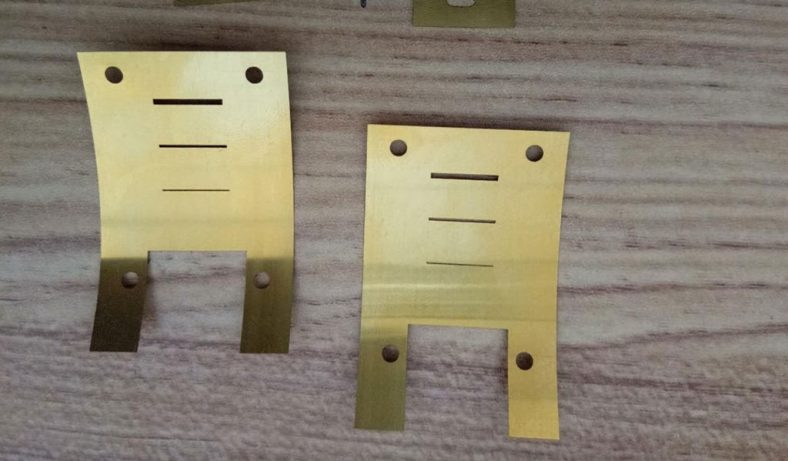
Bronze Sheet Metal Fabrication
-

Mild Steel Sheet Metal Fabrication
-
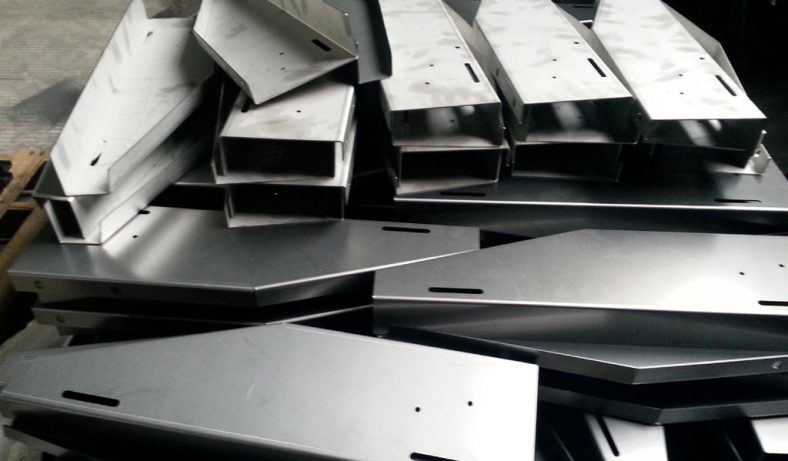
Galvanized Steel Sheet Metal Fabrication
-
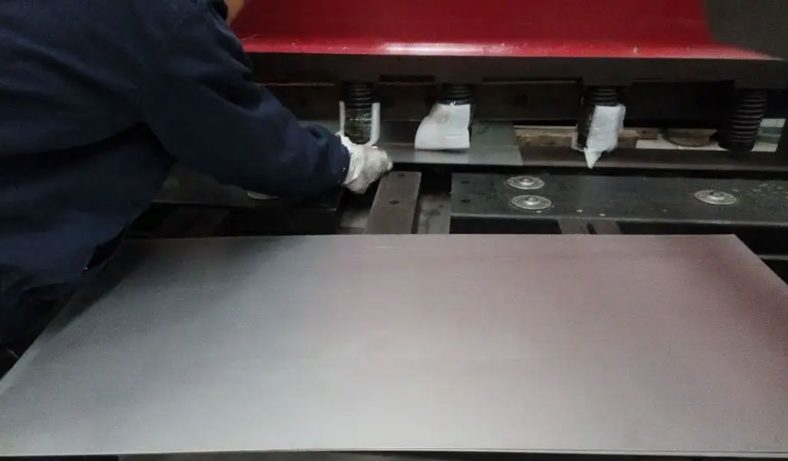
Titanium Sheet Metal Fabrication
-
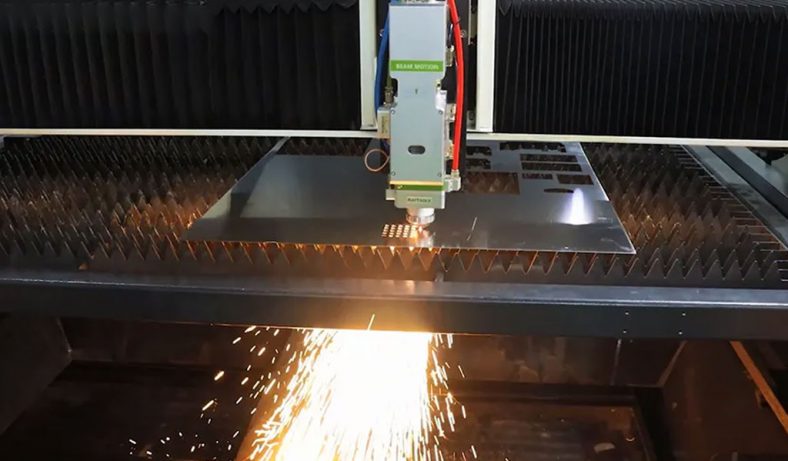
Steel Sheet Metal Fabrication
-
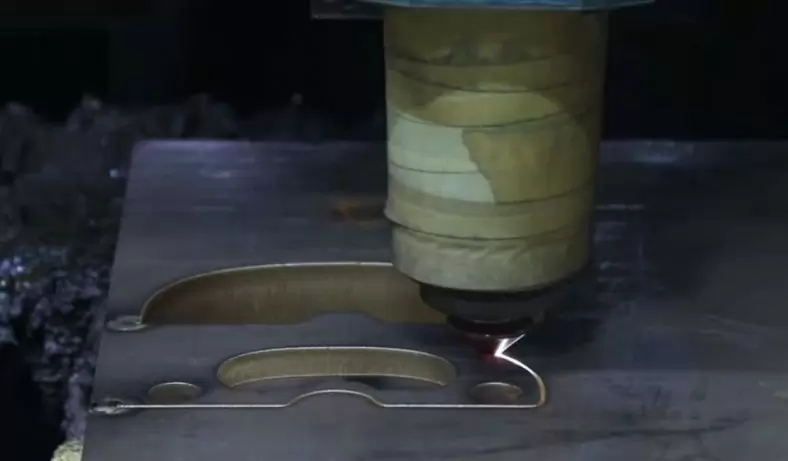
Brass Sheet Metal Fabrication
-

Copper Sheet Metal Fabrication
-
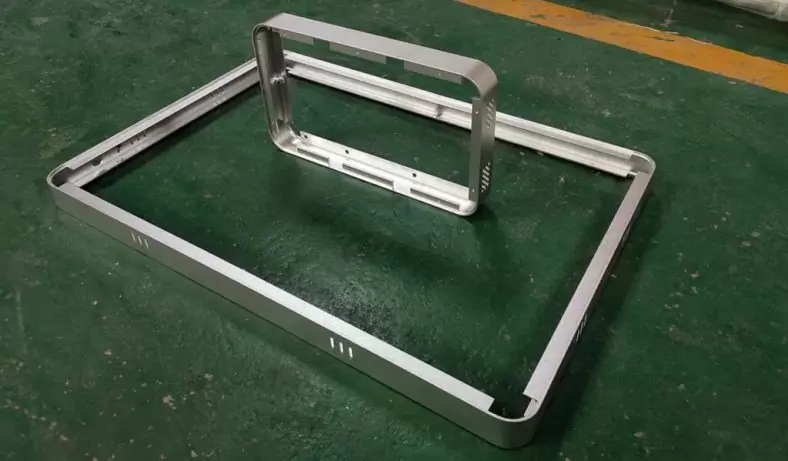
Aluminum Sheet Metal Fabrication
-

Stainless Steel Sheet Metal Fabrication
Our rapid manufacturing capabilities make sheet metal fabrication a great option for end-use prototypes. We can create production-like parts without the high costs and extended lead times associated with traditional production tooling.
